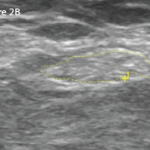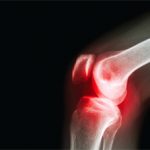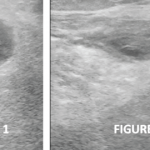The study began with a cross-sectional analysis of 15 patients with active RA disease compared with 16 age- and sex-matched controls, followed by a prospective analysis of 10 RA patients followed for 12 weeks after they started standard DMARD treatment, said Dr. Lee. Researchers performed six-minute, pulsed arterial spin labeling on all subjects to assess regional cerebral blood flow. Experimental pain stimulus was performed using a pressure cuff inflated to achieve pain scores of 40 out of 100 on the hands of RA patients. The same pressure was used for the matched controls.
RA patients found the pressure more painful than the controls. They also had significant, stimulus-induced increases in regional cerebral blood flow in the medial prefrontal cortex and anterior cingulate cortex, which the controls did not.
“However, after 12 weeks of DMARD treatment, regional cerebral blood flow in the hand pain condition decreased to levels similar to that of the controls,” in these two cortices, said Dr. Lee. These findings suggest that pulsed arterial spin labeling may be useful to identify central nervous system pathways involved in RA pain regulation.
Opioids’ Serious Risks
Controversy surrounds opioid use for chronic pain due to abuse and mortality risks. “It’s all over the news today. There’s an epidemic of opioid use and bad consequences in adults in the U.S.,” said Cecilia P. Chung, MD, MPH, a researcher at Vanderbilt University Medical Center in Nashville. Data from the Centers for Disease Control and Prevention showed high rates of opioid-related emergency department visits and overdose deaths in recent years.6
Do different opioids, including long-acting forms, vary in their mortality risks? A retrospective cohort study, “Comparative Safety of Long-Acting Opioids for Non-Cancer Pain,” compared the safety of three widely prescribed long-acting opioids: morphine slow-release (SR), oxycodone controlled-release (CR) and transdermal fentanyl.7 The study used data on 50,658 patients enrolled in Tennessee Medicaid, including individuals with cancer or other serious diagnoses. The primary outcome was out-of-hospital mortality.
Long-acting opioids were prescribed primarily for musculoskeletal pain in 90% of the cases studied, said Dr. Chung. Six hundred and eighty-nine deaths occurred during 44,385 person-years of follow-up. Although all-cause mortality did not significantly differ between patients taking transdermal fentanyl and morphine SR, “the risk for both out-of-hospital, all-cause mortality and opioid-related mortality was 21% lower in patients taking oxycodone SR compared with those taking morphine SR,” she said.
Analgesic Exercise?
Postmenopausal breast cancer patients on aromatase inhibitors (AIs) who experienced arthralgia, a common treatment side effect, found pain relief with exercise according to findings reported in “Pain and Sensitization in Women with Aromatase Inhibitor-Induced Arthralgia,” presented by lead author Monica Crespo-Bosque, MD, a resident at Boston University Medical Center.8



